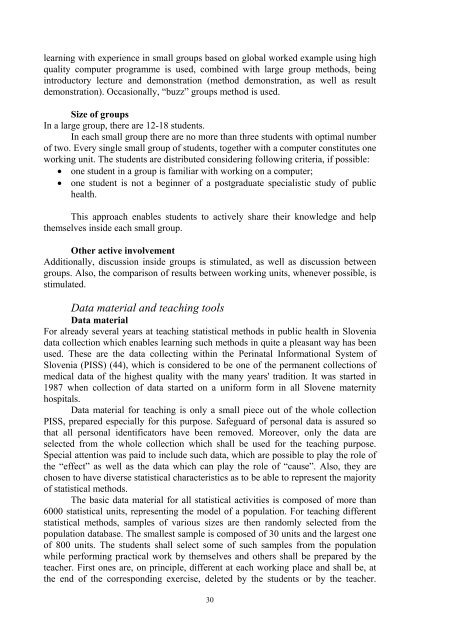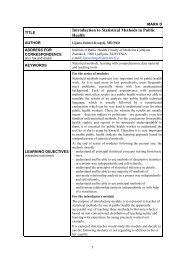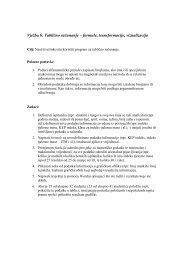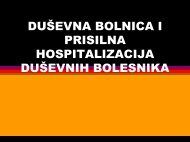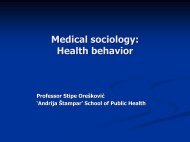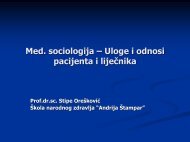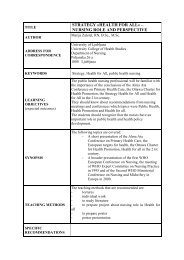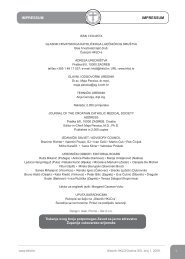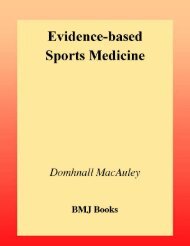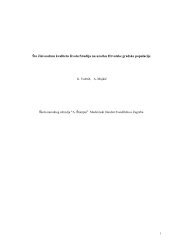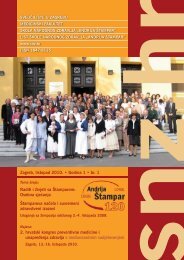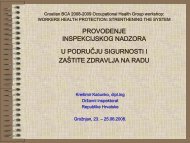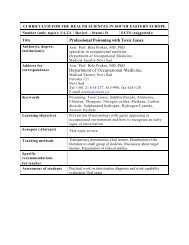STATISTINE METODE V EPIDEMIOLOGIJI
STATISTINE METODE V EPIDEMIOLOGIJI
STATISTINE METODE V EPIDEMIOLOGIJI
You also want an ePaper? Increase the reach of your titles
YUMPU automatically turns print PDFs into web optimized ePapers that Google loves.
learning with experience in small groups based on global worked example using high<br />
quality computer programme is used, combined with large group methods, being<br />
introductory lecture and demonstration (method demonstration, as well as result<br />
demonstration). Occasionally, “buzz” groups method is used.<br />
Size of groups<br />
In a large group, there are 12-18 students.<br />
In each small group there are no more than three students with optimal number<br />
of two. Every single small group of students, together with a computer constitutes one<br />
working unit. The students are distributed considering following criteria, if possible:<br />
• one student in a group is familiar with working on a computer;<br />
• one student is not a beginner of a postgraduate specialistic study of public<br />
health.<br />
This approach enables students to actively share their knowledge and help<br />
themselves inside each small group.<br />
Other active involvement<br />
Additionally, discussion inside groups is stimulated, as well as discussion between<br />
groups. Also, the comparison of results between working units, whenever possible, is<br />
stimulated.<br />
Data material and teaching tools<br />
Data material<br />
For already several years at teaching statistical methods in public health in Slovenia<br />
data collection which enables learning such methods in quite a pleasant way has been<br />
used. These are the data collecting within the Perinatal Informational System of<br />
Slovenia (PISS) (44), which is considered to be one of the permanent collections of<br />
medical data of the highest quality with the many years' tradition. It was started in<br />
1987 when collection of data started on a uniform form in all Slovene maternity<br />
hospitals.<br />
Data material for teaching is only a small piece out of the whole collection<br />
PISS, prepared especially for this purpose. Safeguard of personal data is assured so<br />
that all personal identificators have been removed. Moreover, only the data are<br />
selected from the whole collection which shall be used for the teaching purpose.<br />
Special attention was paid to include such data, which are possible to play the role of<br />
the “effect” as well as the data which can play the role of “cause”. Also, they are<br />
chosen to have diverse statistical characteristics as to be able to represent the majority<br />
of statistical methods.<br />
The basic data material for all statistical activities is composed of more than<br />
6000 statistical units, representing the model of a population. For teaching different<br />
statistical methods, samples of various sizes are then randomly selected from the<br />
population database. The smallest sample is composed of 30 units and the largest one<br />
of 800 units. The students shall select some of such samples from the population<br />
while performing practical work by themselves and others shall be prepared by the<br />
teacher. First ones are, on principle, different at each working place and shall be, at<br />
the end of the corresponding exercise, deleted by the students or by the teacher.<br />
30


